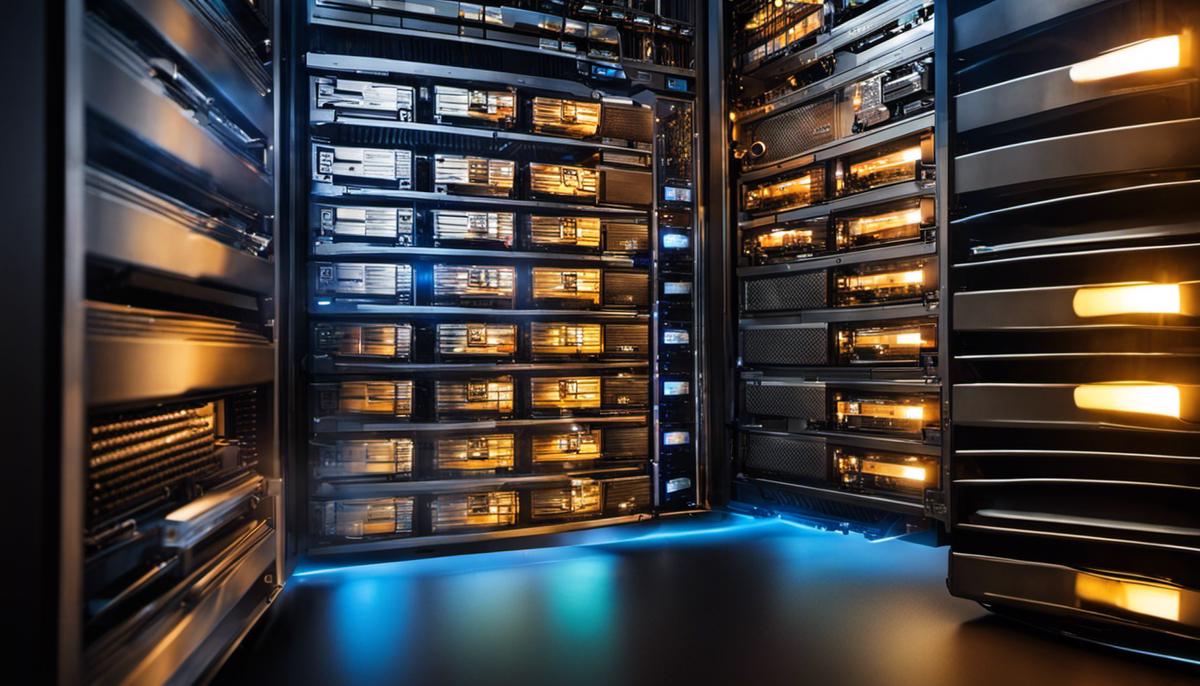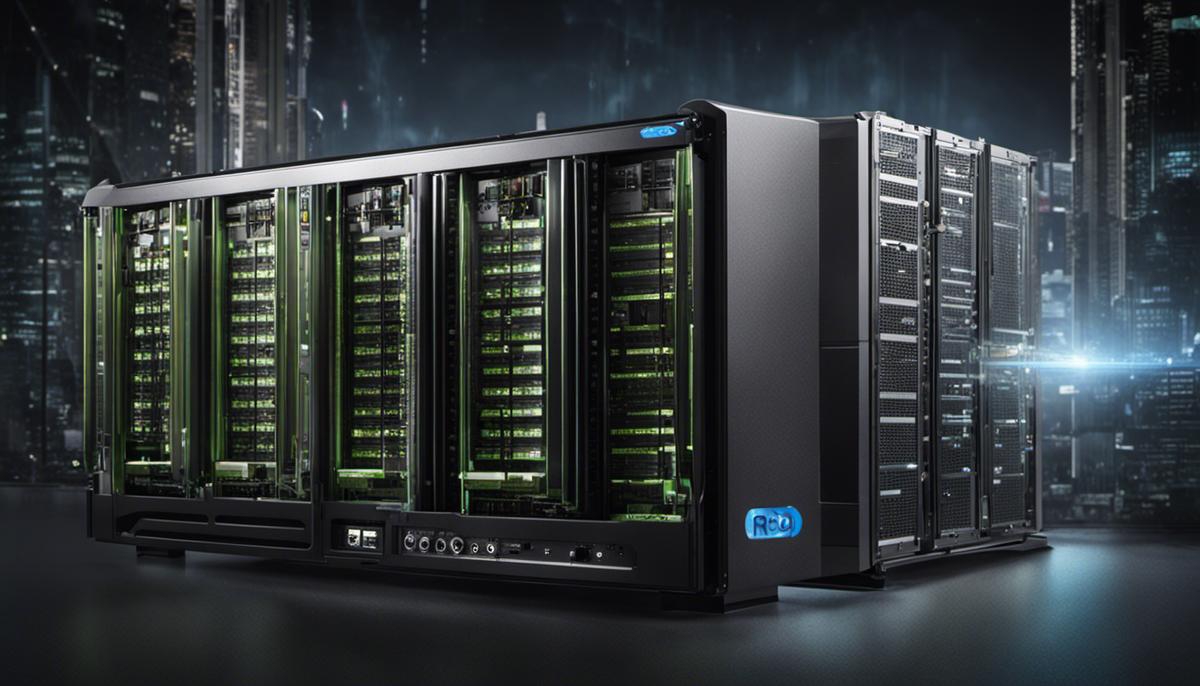Stepping into the data storage realm, one of the phrases that generates a hive of activity is RAID, an acronym for Redundant Array of Independent Disks. Like the backbone of the human body, RAID offers significant integral support to modern data storage systems. This piece aims to demystify RAID, delving into its rich history, the nuts and bolts of its operation, and the rationale behind its critical role in data storage. An exploration into the numerous benefits of using RAID, from improved data protection to enhanced performance, and comprehensive guidance on its practical implementation beckons. Moreover, glancing an eye into the future, an examination of emerging trends and future projections about RAID promises to enhance the understanding of this focal point in data storage.
Understanding RAID
Technology is evolving at a rapid pace, turning sci-fi dreams into absolute realities. Amongst these numerous technological advancements, one that’s taken the tech world by storm is the RAID system– a Redundant Array of Independent Disks. This technology is essentially shaping and redefining data storage. Accordingly, every tech enthusiast needs to know about RAID, given its significance for reliable and efficient data storage.
In layman’s terms, RAID is a method of storing the same data across multiple hard disks to achieve a blend of enhanced speed, data protection, and improved performance. Such an interplay of hard disks acts like a cohesive system, ensuring your data is not reliant on a single device and is practically insulated against disk failures.
RAID is not a single strategy but a composite plethora of methods, each possessing its unique set of advantages. For instance, RAID 0 splits data across multiple drives, improving speed and performance. Meanwhile, RAID 1 duplicates the same data on two hard disks, offering complete redundancy and backup.
RAID 5, a commonly adopted approach, distributes parity along with the data, boosting data protection. For those looking at maximizing speed and data protection simultaneously, RAID 10 is the answer, as it combines the capabilities of RAID 0 and RAID 1.
In the digital age, the importance of data can hardly be understated. It’s the basis for decision-making trend prediction and holds incredible monetary value. This makes RAID a crucial player in the tech world. Its principal benefit lies in its redundancy. A hard drive failure can lead to catastrophic losses. By providing multiple copies of data, RAID protects against such potential nightmares.
RAID boosts overall performance and speed. It divides the workload among multiple disks. This process, known as ‘striping’, enhances data access and read-write speeds. Consequently, RAID has become an indispensable tool for data-intensive tasks and processes.
RAID also offers a cost-effective data storage solution. It allows the use of cheaper, smaller disks in an array without compromising on storage capacity or performance.
However, keep in mind that RAID is not a universal magic solution. It does not replace the need for regular data backups, nor does it protect against data corruption or viruses. That said, when implemented correctly, RAID can raise the reliability and performance of storage systems to previously unimaginable heights.
In a world where data is the new currency, technology like RAID is more than just a matter of convenience or speed. It becomes a necessity, a guardian of our digital treasures. By understanding and leveraging its capabilities, we can take our relationship with technology to the next level – one of minimal manual intervention, maximum automation, and unparalleled efficiency. Dive into the world of RAID today and open doors to accelerated performance and unparalleled data protection.

Benefits of RAID
In a rapidly evolving digital landscape, RAID, or Redundant Array of Independent Disks, establishes a reliable platform for data storage and retrieval. One of the salient advantages of RAID is its impactful role in data management and recovery.
In essence, RAID’s real strength lies in its innate ability to counter data loss. This feat is achieved through redundancy; ‘mirroring’ and ‘parity’ are the two fundamental principles enabling this function. In RAID systems, redundancy ensures that multiple copies of data are stored across different drives. As such, even if one disk fails, the data remains available on other disks, thereby mitigating the risk of losing critical information.
Mirroring, primarily utilized in RAID 1 and RAID 10, is about duplicating the entire data from one drive onto another. If one drive malfunctions, the system continues to operate seamlessly with undisturbed data access. Moreover, recovery becomes straightforward and relatively speedy since the secondary drive remains an intact copy of the failed one.
Parity, integrated into RAID 5 and RAID 6 systems, offers an even more robust solution for data recovery. It stems from creating a ‘parity bit.’ This unique piece of information can reconstruct the entire chunk of data from the remaining drives in case of a disk failure. Although parity can incur a slight performance cost, it grants a strong guard against data loss and provides an efficient recovery process.
Above and beyond the realm of data recovery, RAID positions itself as an enabler of effective data management. Given RAID’s capability of splitting and distributing data across multiple drives (striping), the system allows concurrent data reading and writing operations. Performance-wise, this means data can be accessed and processed at a faster rate, boosting overall system efficiency. Furthermore, depending on the RAID level, one can achieve a balance between cost, performance, and data protection, providing more flexibility in managing diverse data requirements.
However, RAID is not the silver bullet for all data woes. For instance, while RAID provides recovery options from hardware failures, it might not aid in software corruption or user mishandling scenarios. For this reason, maintaining regular data backups becomes imperative for comprehensive information security. Worth noting is the rise of cloud-based solutions and hybrid systems that harp on RAID’s strengths and can counter its drawbacks.
In today’s digitalized world, RAID continues to serve as an ace in effective data management and recovery. When the stakes are high, RAID provides a unique blend of data protection, improved performance, and cost-effectiveness. That’s why this bit of ‘old school’ tech remains highly pertinent, even in the flexible, diverse digital era today. With advanced systems, embracing the full potential of RAID beyond traditionally perceived boundaries is the road to creating an integrated, resilient, and high-performing digital ecosystem.
Implementing RAID
It’s time to delve deeper into the nuts and bolts of how RAID can be implemented in your system. This may seem intimidating but fear not – implementing RAID is much less complex than it might initially appear, and the benefits are undoubtedly worth it.
To be successful in embracing RAID, begin with understanding the hardware requirements. Despite the virtual nature of RAID, hardware is critical. A RAID controller, typically available as either an integrated motherboard component or a separate expansion card, will be necessary to facilitate the interaction of multiple hard drives. The disk drives themselves are also a key consideration. Remember that different RAID levels could demand a higher number of drives. The drive’s speed, capacity, brand, and model should be identical for optimal drive array performance and stability.
Once the hardware is sorted, choose the RAID level that fits the system’s needs in terms of performance and data protection. RAID configuration should be determined based on your specific requirements. Whether it’s RAID 1 for mirroring and redundancy, RAID 0 for a striped set without fault tolerance, or RAID 10 for a combination of both, the chosen setup has to reflect the system’s needs accurately.
Ultimately, setting up RAID involves configuring the RAID controller through the system BIOS (Basic Input/Output System) or UEFI (Unified Extensible Firmware Interface). Once in the configuration utility, create a new array, select the necessary drives, and pick the RAID level. Remember to carry out this important step during the system’s initial setup or after backing up any important data.
Next, install the operating system, ensuring that all updates and patches are applied to avoid any known issues with RAID. Often, RAID controllers require a specific driver that may not be natively included with the OS. Don’t forget to install any necessary driver for the RAID controller during the OS installation process.
After the operating system has been installed, the RAID array should show as a single, united disk drive. The RAID controller will manage the distribution of data, duplicating, splitting, or combining it depending on the configured RAID level.
An integral part of implementing RAID is managing it. Be sure to monitor the RAID arrays routinely to detect any possible issues early. Most RAID controllers provide software for monitoring RAID health.
Last but not least, remember that RAID is not an ultimate data protection solution. Even in operable RAID arrays, hard drives can still fail unpredictably. So, regular off-site data backups and verifying the integrity of those backups is an essential complement to employing RAID in a system.
In conclusion, the benefits of implementing RAID in a system are immense as RAID offers superior performance, provides data redundancy, and enhances the speed of data storage and retrieval. With sound knowledge, meticulous planning, and careful implementation – achieving a successful RAID setup is entirely within reach.

RAID’s Future Perspectives
Emerging Trends Impacting RAID Technology
With an existing foundation about RAID and its broad scope, let’s dive into what the future holds for RAID, primarily shaped by emerging trends and technologies.
The rise of solid-state drives (SSDs), offering superior performance and resilience over traditional hard drives, will significantly impact RAID configurations. SSDs inherently accommodate the input/output demands placed on RAID systems, delivering superior lifespan, speed, and reduced power consumption. Consequently, RAID types that distribute parity data across the array, like RAID 5 and RAID 6, can benefit hugely from the enhanced endurance of SSDs. However, because SSDs are more expensive, the cost savings associated with RAID might not be as pronounced.
Meanwhile, the prevalence of Big Data and Internet of Things (IoT) devices collect and process vast amounts of data. To manage these demands, enterprises will look to implement larger RAID arrays to provide adequate storage and performance. It’s vital, however, to ensure adequate fault tolerance in these configurations, as a single drive failure could take days to rebuild and severely degrade performance.
Further, the advent of cloud technology and cloud storage services adds a new dimension to data redundancy and backup. Technically, RAID and cloud storage are two sides of the same coin, both aimed at ensuring the reliability and accessibility of data. The utilization of RAID alongside cloud-based backups is an innovative step towards enhanced data protection, offering each method’s unique advantages.
Artificial intelligence could play a part in the future of RAID arrays as well. Machine learning algorithms could be used to optimize and manage RAID arrays dynamically, ensuring maximum performance and reliability based on changing user needs and workloads.
Last but not least, the proliferation of Software-Defined Storage (SDS) will revolutionize RAID configurations as it abstracts the software services from the physical storage hardware, offering flexible and independent RAID scalability. With SDS and RAID together, the storage pool can be resilient against single and multiple failures with an optimized balance between storage capacity, performance, and protection.
And so, as RAID technology adjusts to accommodate these emerging trends, its longevity may not be at risk, as some have postulated. Rather, the role of RAID is evolving from its conventional objectives towards a more adaptable, dynamic tool in the broad landscape of data protection and redundancy. By walking hand in hand with these trends, RAID is poised to continue its critical role in the new digital age – ever-changing but definitely enduring.

RAID’s future is indisputably intertwined with the development of technology and the escalating demands in data storage. The discussion thus far underscores RAID’s vitality, with its multifaceted benefits of data redundancy, augmented performance, and robust data protection. However, to fully harness its potential, meticulous consideration is needed when implementing different RAID configurations and technologies. As technology surges forward, RAID systems will inevitably adapt and evolve in tandem, responding to emerging trends and advancements. Looking ahead, RAID will undeniably pivot towards new horizons in data storage, shaping and impacting myriad facets of our digital existence.

